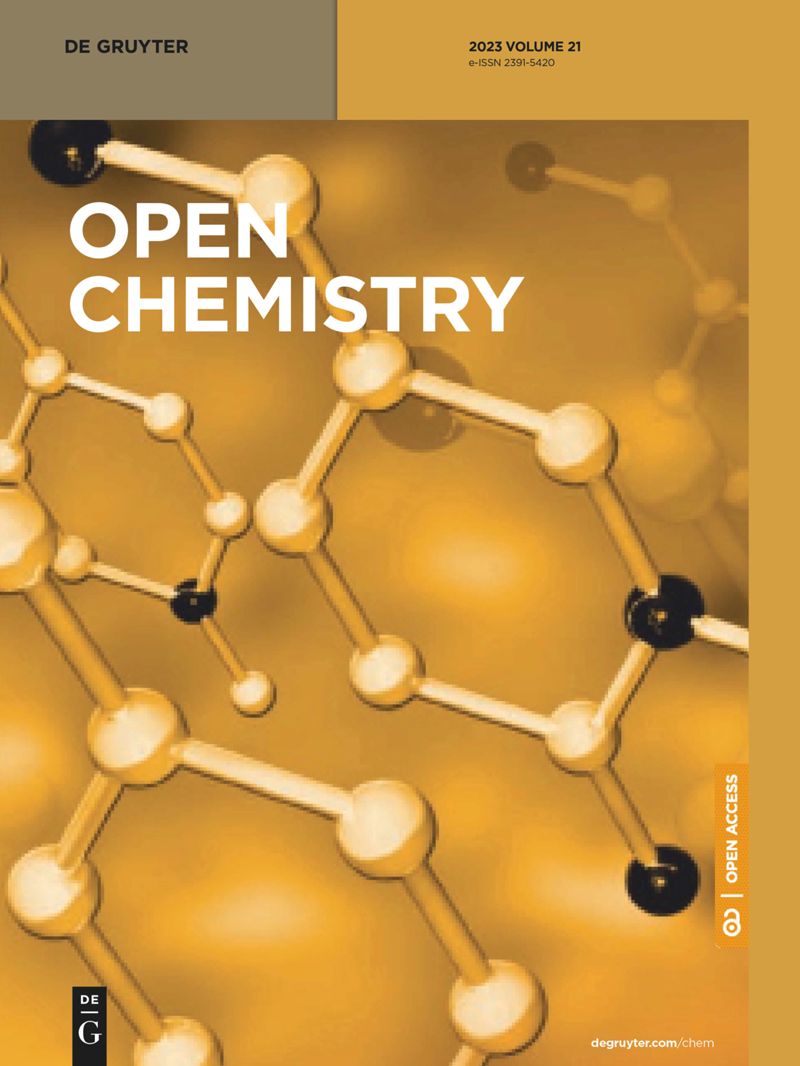作为潜在 PI3Kα 抑制剂的天然绿原酸的鉴定和硅学筛选:药物发现的计算方法
IF 1.9
4区 化学
Q3 CHEMISTRY, MULTIDISCIPLINARY
引用次数: 0
摘要
乳腺癌是全球妇女死亡的最大原因。来自药用植物的天然化学物质为癌症治疗提供了希望。这项研究筛选了 29 种干翅果植物提取的化学物质,其中大部分是叶绿素,以寻找治疗乳腺癌的潜力。首先,我们使用 Gaussian09 和 DFT/B3LYP/6-311+G(d, p) 计算来评估化合物的稳定性和反应性。我们进行了分子对接实验,以确定与 PI3Kα 蛋白活性口袋具有高结合亲和力的药物。结果发现 DJ1-DJ22 是最有效的 PI3Kα 抑制剂,其能量范围为 -8.0 至 -9.2 kJ/mol。通过硅药动学和生物活性筛选,DJ3、DJ7 和 DJ18 被确定为有前景的 PI3Kα 抑制剂。利用分子动力学模拟,以 DJ3、DJ7、DJ18 和曲妥珠单抗为药理参考,在水模型中测试了 PI3Kα 骨架的稳定性。合成具有靶向性的 DJ3、DJ7 和 DJ18 衍生物可能会产生用于相关癌症的乳腺癌类药物分子。该研究采用硅学方法寻找用于乳腺癌治疗的天然绿原酸,从而开发出新的化疗药物。本文章由计算机程序翻译,如有差异,请以英文原文为准。
Identification and in silico screening of natural phloroglucinols as potential PI3Kα inhibitors: A computational approach for drug discovery
Breast cancer is the biggest cause of death among women worldwide. Natural chemicals from medicinal plants offer promise for cancer therapy. This research screens 29 Dryopteris species plant-derived chemicals, mostly phloroglucinols, for breast cancer therapy potential. First, we used Gaussian09 and DFT/B3LYP/6-311+G(d, p) calculations to evaluate compound stability and reactivity. We conducted molecular docking experiments to identify drugs with high binding affinity for the PI3Kα protein’s active pocket. DJ1–DJ22 were found to be the most effective PI3Kα inhibitors, with energies ranging from −8.0 to −9.2 kJ/mol. From in silico pharmacokinetic and bioactivity screening, DJ3, DJ7, and DJ18 were identified as promising PI3Kα inhibitors. PI3Kα backbone stability was tested in a water model using molecular dynamics simulations employing DJ3, DJ7, DJ18, and Trastuzumab as a pharmacological reference. Synthesis of target-hit DJ3, DJ7, and DJ18 derivatives may lead to breast cancer drug-like molecules for related cancers. The work uses in silico methods to find natural phloroglucinols for breast cancer therapy, enabling new chemotherapeutic drugs.
求助全文
通过发布文献求助,成功后即可免费获取论文全文。
去求助
来源期刊

Open Chemistry
CHEMISTRY, MULTIDISCIPLINARY-
CiteScore
3.80
自引率
4.30%
发文量
90
审稿时长
6 weeks
期刊介绍:
Open Chemistry is a peer-reviewed, open access journal that publishes original research, reviews and short communications in the fields of chemistry in an ongoing way. The central goal is to provide a hub for researchers working across all subjects to present their discoveries, and to be a forum for the discussion of the important issues in the field. The journal is the premier source for cutting edge research in fundamental chemistry and it provides high quality peer review services for its authors across the world. Moreover, it allows for libraries everywhere to avoid subscribing to multiple local publications, and to receive instead all the necessary chemistry research from a single source available to the entire scientific community.
 求助内容:
求助内容: 应助结果提醒方式:
应助结果提醒方式:


